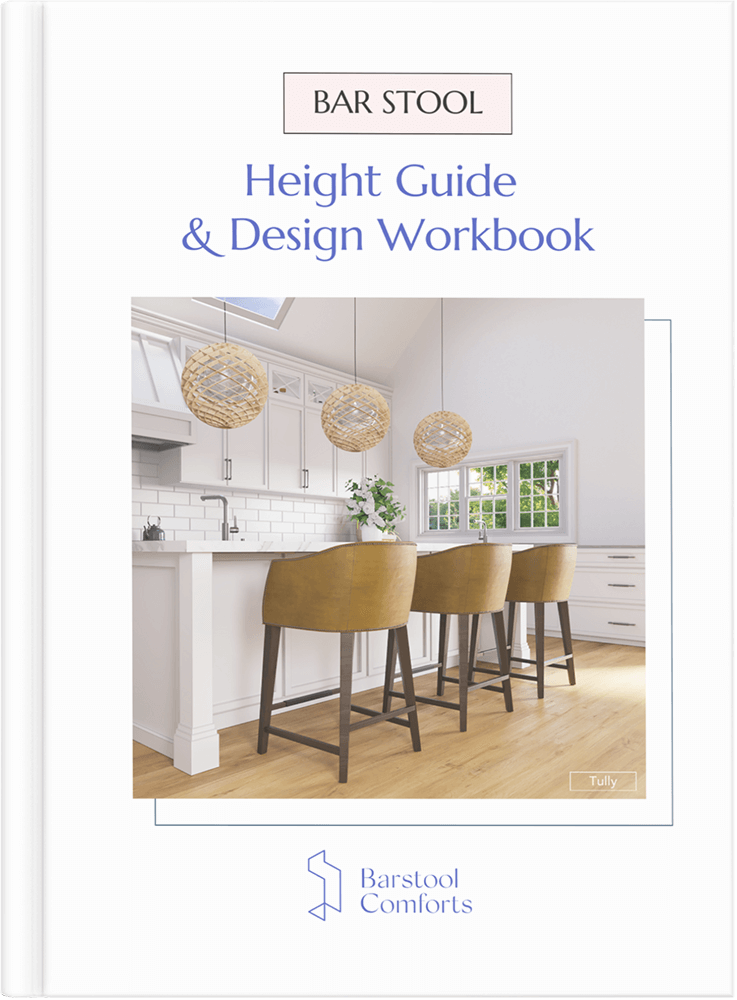How to Choose the Right Stool Height for Your Space
Choosing the right stool height is crucial to ensure comfort in your space. Incorrect stool heights can lead to discomfort and may not provide the optimal functionality for your bar or kitchen area.
For a detailed step-by-step process on how to measure and match the stool height to your specific counter or bar, visit our Bar Stool Height Guide. This guide offers comprehensive insights and tips to help you make the best choice.
Learn more about finding the right height for your stools.
Comparison of Pros
| Feature | Counter Height | Bar Height |
|---|---|---|
| Compatibility | Matches standard kitchen counter heights (36 inches), integrating seamlessly into kitchen or dining areas. | Suited for bar counters around 40 to 42 inches high, ideal for traditional bar settings or entertainment areas. |
| Activity Suitability | Comfortable for eating, working, or hobbies due to closer proximity to counter height. | Elevated seating position offers an enhanced view, beneficial in public venues or for enjoying scenic views. |
| Family Friendliness | Safer and more convenient for families with children, easier for kids to climb on and off. | The taller stature contributes to a sophisticated and upscale ambiance, serving as a focal point in decor. |
Factors to Consider When Choosing Stool Height

Counter Height
The height of your counter is the primary factor in determining the appropriate stool height.
Measuring the distance from the floor to the top of the counter will help you identify the right stool size.
Remember, the goal is to maintain a comfortable gap of 10 to 12 inches between the stool seat and the counter surface.
Setting
The setting where the stools will be used also influences your decision:
- For kitchen islands, counter stools are the go-to choice due to their moderate height.
- Home bars and commercial spaces often require bar stools to match the taller counter heights. Restaurants may use a mix of both, depending on the design and layout.

Legroom
Legroom is a critical consideration for ensuring comfort.
Ensure there is adequate space between the seat and the counter to allow for easy movement and leg positioning. Insufficient legroom can lead to discomfort during prolonged use.
Comfort and Ergonomics
Comfort should never be compromised. Look for stools with well-padded seats and ergonomic designs that support your posture.
Swivel stools can enhance comfort by providing easy access and mobility, especially in tight spaces.
Aesthetic Preferences and Design Elements
Stools come in various designs, materials, and finishes. Consider the overall aesthetic of your space and choose stools that complement your existing décor.
From sleek modern designs to rustic wooden finishes, the right stool can enhance the visual appeal of your room.
Care and Maintenance Requirements
Finally, consider the care and maintenance requirements of the stools.
Materials like leather and wood may require regular upkeep to maintain their appearance, while metal and plastic stools are often easier to clean and maintain. Choose stools that fit your lifestyle and maintenance preferences.
Adjustable-Height Stools
Overview of Customizable and Adjustable Stool Height Options
Adjustable-height stools offer a versatile solution for various settings and counter heights.
These stools come with mechanisms that allow you to raise or lower the seat height, making them adaptable to different counter or bar heights.
They are particularly useful in multi-functional spaces where the seating requirements may vary.
Benefits and Considerations of Adjustable Stools
One of the primary benefits of adjustable-height stools is their flexibility.
They can easily transition from a low counter height to a high bar height, accommodating multiple users and functions.
However, it’s essential to consider the stability and durability of the adjustment mechanism. High-quality stools with robust construction are crucial for long-term use.
Role of Adjustable-Height Stools in Accommodating Various Counter/Bar Heights
Adjustable-height stools are ideal for spaces with varying counter heights or for those who anticipate changes in their furniture layout. They provide the convenience of a single stool type that can adapt to different settings, offering a practical and stylish solution for diverse seating needs.
Explore Our Selection of Stools
When your bar stools need an upgrade, choosing the right stool height involves careful consideration of various factors, from counter height and setting to comfort, aesthetic preferences, and the color of your furniture.
By understanding these elements, you can select stools that enhance both the functionality and visual appeal of your space.
Ready to find the perfect stools for your home or business? Explore our extensive selection of stools, including fixed and adjustable-height options, to discover the ideal pieces that meet your needs and style preferences.
FAQs
Yes, there’s a category often referred to as “counter-bar height” or “kitchen bar height.” These surfaces usually measure around 36 to 39 inches tall, bridging the gap between standard counter and bar heights.
A 24″ or 25″ seat height may be more suitable for shorter individuals because it allows their feet to comfortably reach the ground, providing better support and balance. If a shorter person sits in a 26″ seat height, they might find their feet dangling, which can lead to discomfort and reduced stability while seated. Having the ability to firmly place one’s feet on the ground can also help reduce strain on the legs and back, making for a more comfortable seating experience.
The choice often depends on the purpose and aesthetics. Bar height can be ideal for casual, elevated seating, like in a lounge or bar area, while counter height is often preferred for dining spaces, family rooms, or kitchen islands to promote conversation and engagement.
It’s not advisable. Bar height stools will be too tall for counter height tables, making the seating uncomfortable.
Measure the height from the floor to the underside of the counter or table. Ideally, there should be about 10-12 inches of space between the stool seat and the underside of the counter to ensure comfortable legroom.
Yes, in fact we do offer adjustable bar stools here, which allow you to use them for counter and bar heights. These are particularly useful in versatile spaces.
Yes, while there are standard heights, many homeowners customize counters or bars based on their preferences, especially during renovations or when designing a custom-built home.









